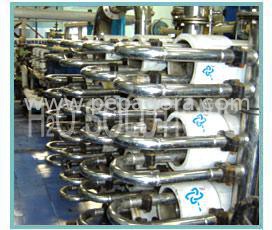H 2 O Solutions
Product Range
Fact Sheet
- Location:New Delhi, India
- Business Type:Manufacturer, Exporter
- Main Products:Reverse Osmosis Plants, Mineral Water Plants
- Reviews & Rating:
Get Verified, Sell more with
- Buyer's trust
- Faster conversions
- Better Rankings
- More
Its Free
Verify NowR. O. Plants
Reverse osmosis-manufactured plants are used to produce high-quality demineralised water, especially where the client looks to minimise the use of chemicals.
- FOB PriceNA
- Min Order QuantityNA
- Payment TermsNA
Other Details
Reverse osmosis-manufactured plants are used to produce high-quality demineralised water, especially where the client looks to minimise the use of chemicals which are the regenerants associated with the more conventional demineralised ion exchange process.
Reverse Osmossis Plants RO plant is used extensively in the food and beverage industry (especially the brewing industry), pharmaceutical and the electronics industries. It uses a computerised programme for studying the water chemistry so as to select the most suitable membrane configuration and in order to provide a plant which gives a low water-rejection rate.
Further help is provided to the client to make use of, often by further treatment, of the reject water.
Range of R O units utilises the most modern membrane technology and consists of a modular design
In its simplest presentation Reverse Osmosis and ultra filtration system is a membrane process. That acts a molecular filters to remove (permeable to water not salt and separating pure water and salt solution, by applying external pressure) dissolved mineral, organic, inorganic and heavy metals. It will also remove microbial matter including bacterial spores and viruses, which cannot remove by any ion exchange technique from water and wastewater.
Reverse Osmossis Plants:
Reverse osmosis has emerged as a serious alternative to chemical treatment systems due to a number of reasons. The minimal use of chemicals makes it environmentally desirable. Reverse osmosis is a simple process and the operational and maintenance costs are lower. It has higher production capacity to space ratio via-a-via other technologies. Ion exchange processes, on other hand, incur high resin replacement costs, substantially higher regeneration costs and inordinate downtime costs due the need for replacing ion exchange columns. While the biggest operating costs for ion exchange systems are regeneration chemicals, the major cost component in RO is energy i.e. electrical power to operate the RO feed pump.
Images




